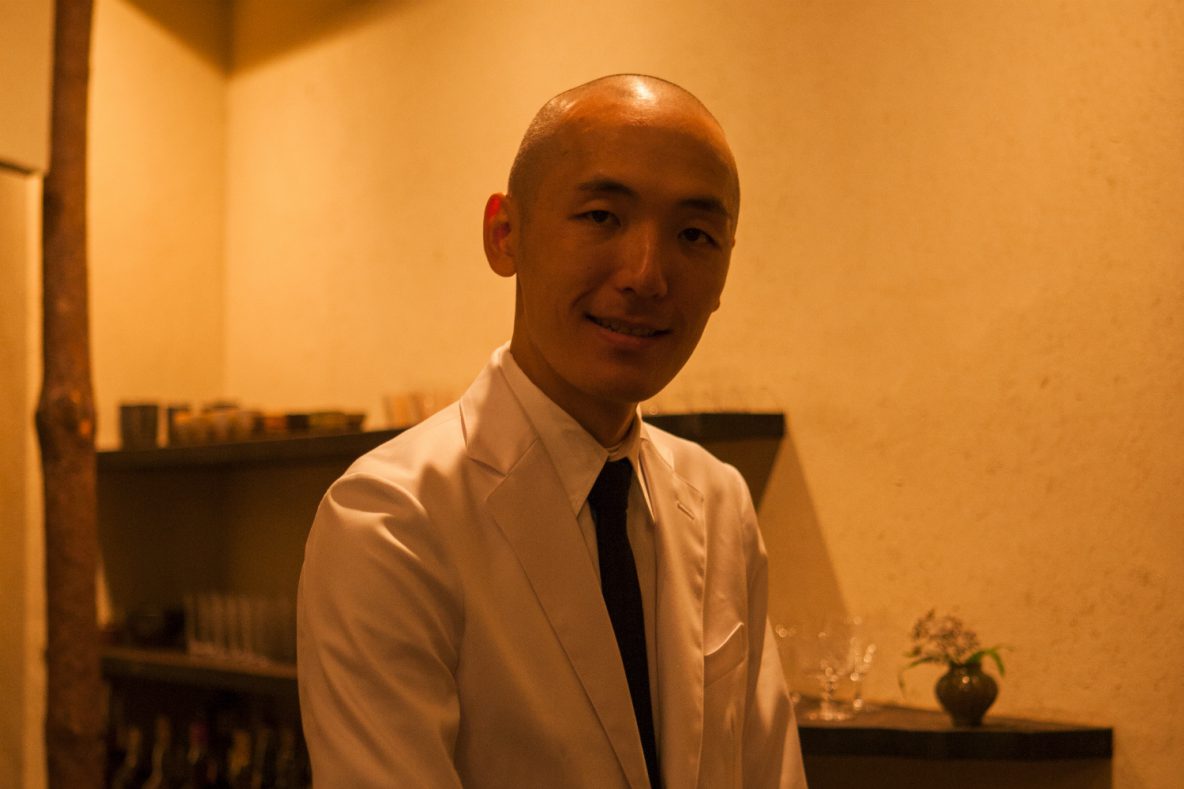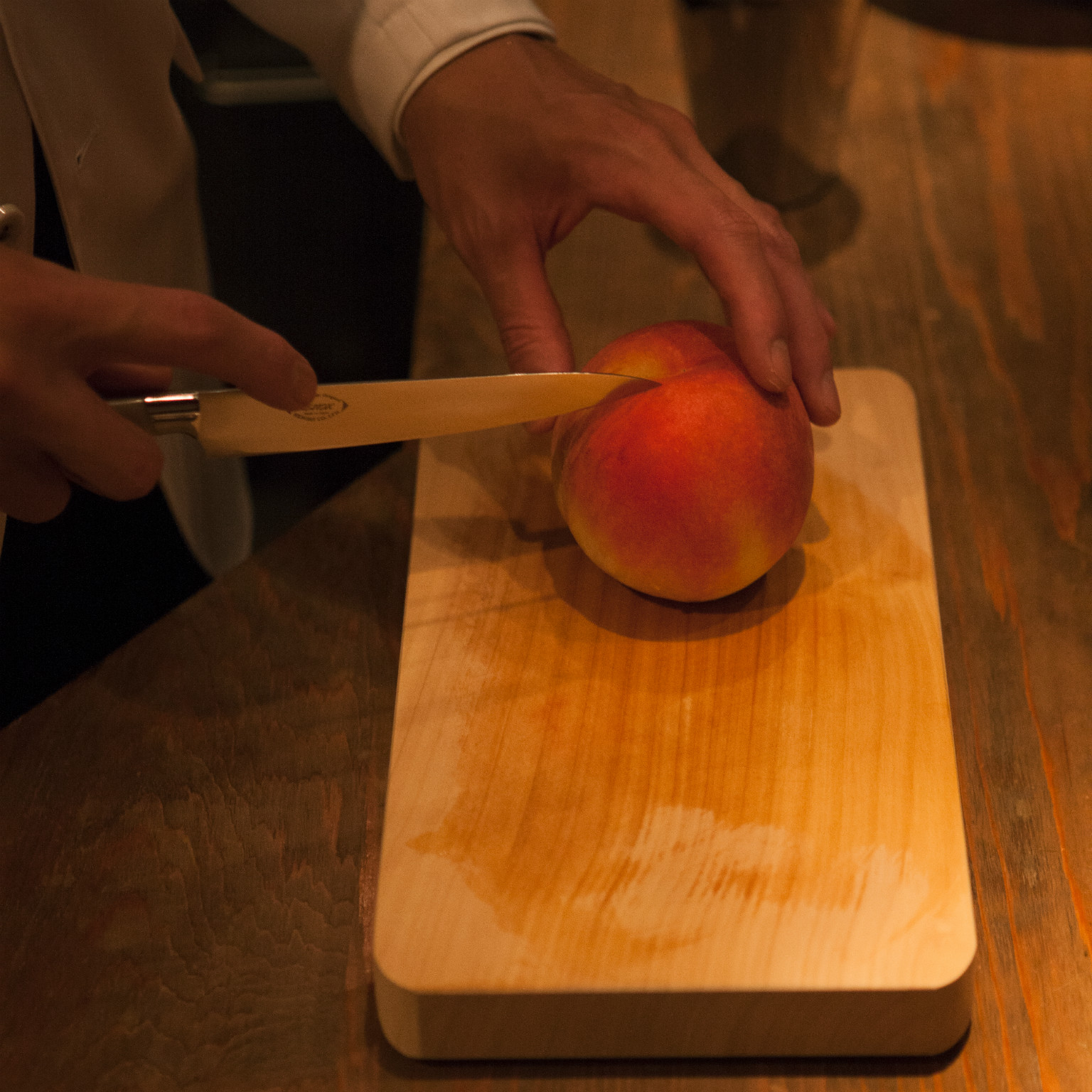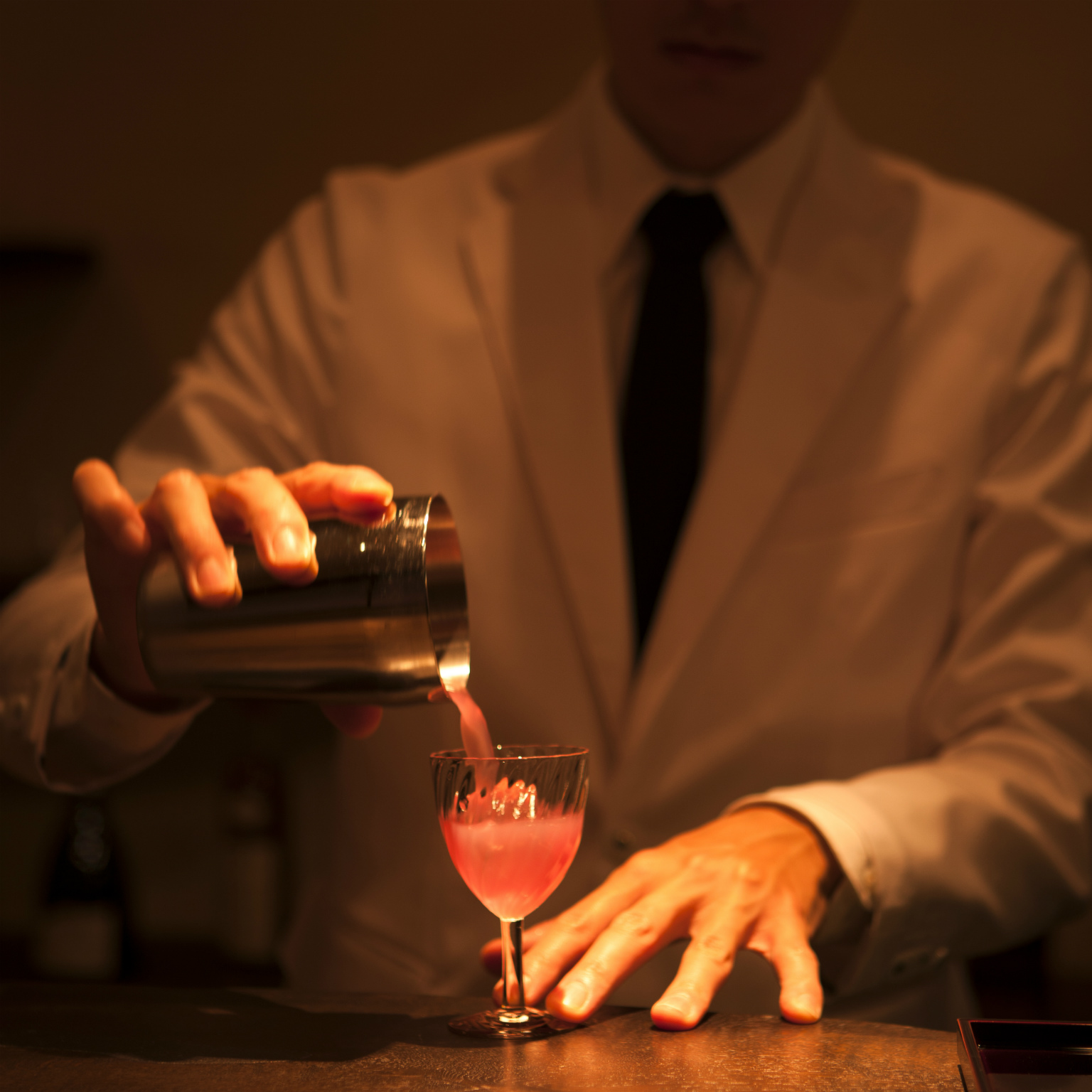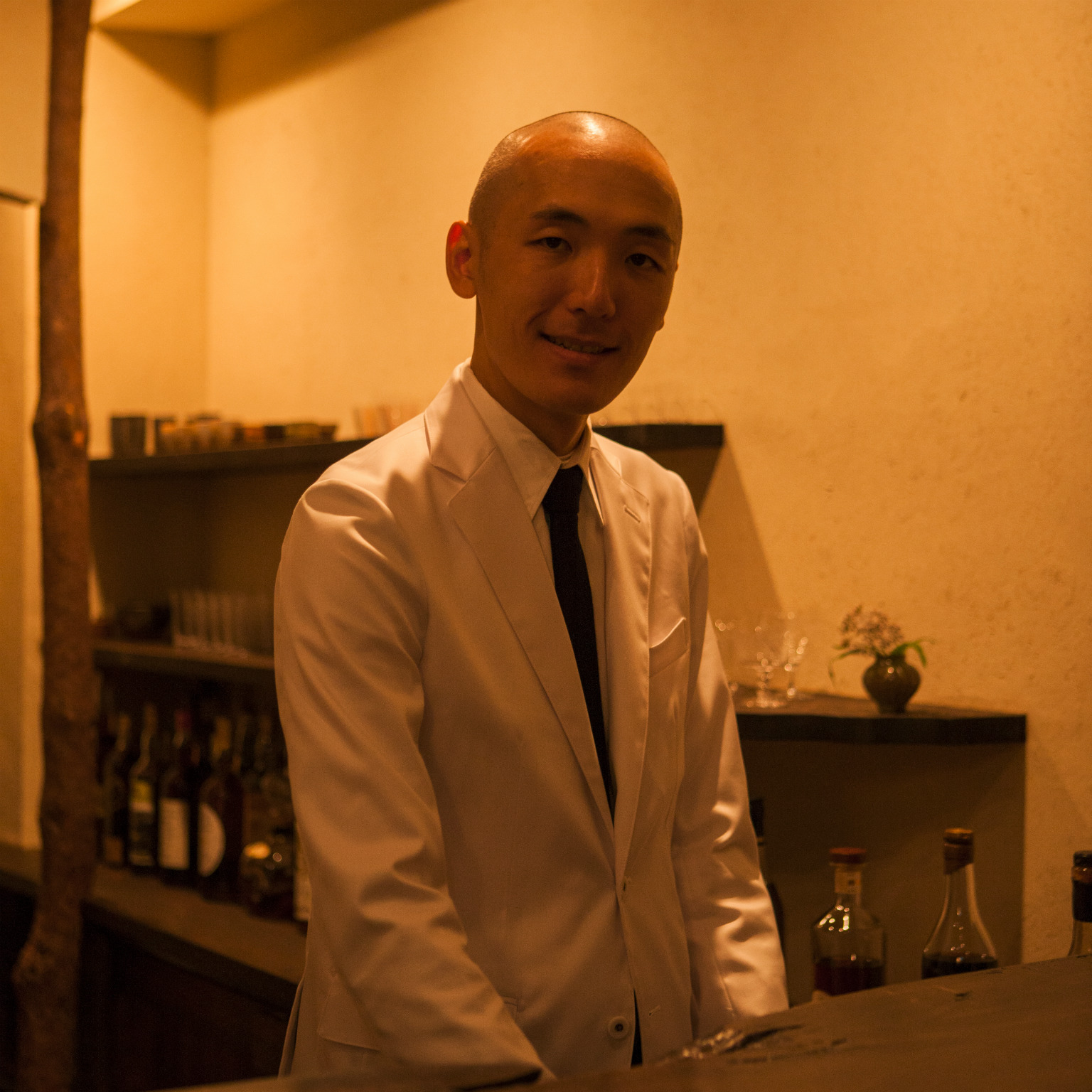“Each ingredient tasted out of balance. So little by little I changed them.”
Gen Yamamoto
Bartender
Gen Yamamoto
Gen Yamamoto is a classically trained bartender, though you might not guess it. He has dispensed with many of the rudiments of his profession: he never shakes a cocktail; never stirs with ice in a mixing glass; never makes martinis, negronis or anything else you’ve heard of. And his drinks are usually tiny.
At his bar, Yamamoto specialises in omakase courses of original cocktails. Guests choose four or six drinks, discuss their aversions or allergies, and leave the details to him. What he serves will depend on the season, the weather, and the time of day.
The cocktails are presented on a lacquer tray, beside a freshly misted seasonal flower. The first soupçon is always refreshing, employing an ingredient such as cucumber juice or ginger. The second has more bite, often using Japanese citrus. And then there’s something more powerful again – perhaps with a fruit tomato, and a gin or shochu. The courses build and build in texture and density, to their dessert-like conclusion.
There are many bartenders that show the season in their drinks. They’ll use watermelons in the summer or persimmons in the autumn. Yamamoto takes the idea so much further: having forged ties with farmers, he consults with them about what’s being harvested.
He says he’s interested in anything delicious, but is more inspired when the ingredient is a little unusual. He buys lesser-known Japanese citruses, such as hebesu, sumikan or hassaku, and has been known to use fava beans, wasabi, celery root, and fennel. He prepares them more in the manner of a chef than a bartender, simmering reductions, creating compotes, and using copper pans and digital thermometers.
Yamamoto devised his first cocktail tasting menu in New York while working as bar manager at Brushstroke, a kaiseki-inspired collaboration between chef David Bouley and Japan’s Tsuji Culinary Institute.
“When I moved to America, the ingredients tasted different, the ambience was different, and the environment was different. I started to focus on natural ingredients, at first just mixing them with vodka — a vodka apple martini or something like that. It didn’t work. Each ingredient tasted out of balance. So little by little I changed them.”
The mixologist questioned everything he had learned. Why does a cocktail have to be chilled? Why must the elements be integrated? Who says a serving should be 70 millilitres or more? And does the alcohol have to kick so hard?
He found Japanese-originated alcohol such as sake or shochu often paired better with his produce than 80 proof spirits. He realised that too much chilling could mute the flavours. And he discovered you can have too much of a good thing. “I make a drink with kumquats, for example,” he says. “If it is a large drink, it’s too thick, too heavy.”
His style was taking shape, but Yamamoto couldn’t execute it properly in the U.S. “People there worried more about the speed of service than the quality of the result,” he says. So he moved back home to Tokyo and designed a bar around his drinks.
It’s a very Japanese room, with clay-coloured walls, a tree trunk for a doorpost, and a 500-year-old slice of Japanese oak as a counter that seats just eight. Yamamoto jokes that he forgot to put speakers in, but music would make no more sense here than in a traditional restaurant or teahouse.
In his eponymous establishment Gen Yamamoto has created Japan’s most Japanese bar. It’s just ironic that he had to leave the country to think of it.
TIPS & RESERVATION INFO
The experience at Gen Yamamoto is special and it shouldn’t be rushed, so plan to stay for at least an hour – longer if you order the six-cocktail set. For this reason, reservations are a good idea and they’re easily made thanks to the owner’s excellent English.
ACCESS DETAILS
1-6-4 Azabu-Juban, Minato-kuDIRECTIONS
Gen Yamamoto
港区麻布十番1-6-4
電話: 03-6434-0652







